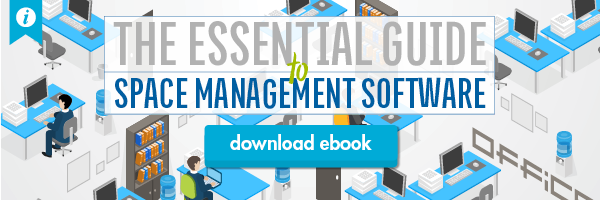7 Questions to Ask When Developing a Space Management Process


Whether a business’s office space is owned or leased, effective space management is vital to the health of the organization. Proper space utilization is as important a business tool as computers, Internet, mobile devices, and management software. It aids the FM team in meeting organizational needs and goals, impacts the ability to attract and retain talent, and influences the company brand and culture. Space management conveys your respect for your workforce, as you are attempting to remove constraints, develop power through partnerships and empower all of your assets. In short, a properly organized and executed space management strategy will be critical for tapping the full potential of your workforce and workplace.
The focus of your space strategy should be about the space as well as the people that occupy the space.  The workspace is a direct reflection of the value the organization places on the workforce. An organization which realizes its workforce and their work exists beyond the four walls of the office, and manages their space accordingly, will be able to attract and retain the quality personnel their company needs. Understanding the type of space you have and keeping close tabs on how it is used, with future needs in mind, is key to workspace flexibility and minimalism, without sacrificing the space and tools your workforce needs. When formulating a new space utilization process, collaborate with management and those on the frontline to answer these seven questions. A well thought-out plan will lead to greater return on all your asset investments.
The workspace is a direct reflection of the value the organization places on the workforce. An organization which realizes its workforce and their work exists beyond the four walls of the office, and manages their space accordingly, will be able to attract and retain the quality personnel their company needs. Understanding the type of space you have and keeping close tabs on how it is used, with future needs in mind, is key to workspace flexibility and minimalism, without sacrificing the space and tools your workforce needs. When formulating a new space utilization process, collaborate with management and those on the frontline to answer these seven questions. A well thought-out plan will lead to greater return on all your asset investments.
1) How Is the Space Currently Used?
How can you possibly understand what changes are necessary without knowing where you stand now? The first step to implementing a successful strategy is understanding if your space is allocated proportionately and appropriately to meet both organizational and individual needs. How functionally suitable is the space for its intended purposes? Are portions of your facility under/over utilized? What methods are you currently using to identify these situations? Remember, improperly used space not only impacts the bottom line in terms of employee wellness and productivity, it increases energy consumption and maintenance and operating costs.
2) What Are Our Business Goals and How Does Our Workspace Support Those Objectives?
To develop and implement a space utilization strategy that aligns with company objectives, it is important to understand what those goals are, both long and short-term. Once the business’s intentions are known, management must clearly communicate these to the workforce. Your new strategy will likely involve change – something few of us embrace. By involving them in the process and maintaining open communication, you empower your workforce to be actively engaged in the success of the company.
3) How is Data Collected and Utilized?
Metrics are your biggest insight in understanding the overall picture; but how they are used will determine their effectiveness. You will find it difficult to improve on processes when you don’t have clear, real-time data to support the need for change. Ask yourself; what tools have been implemented to collect and store data? What are you doing with this information, once it’s compiled? Are you still using spreadsheets and paper floor plans? These antiquated methods leave room for error and are a full-time job to keep up with.
If you haven’t already, now is a good time to invest in a space management software solution that offers you one database in which to store and evaluate information regarding your space.
Your IWMS tool should retain disparate information in one place and analytics will help your FM team make accurate suggestions for ensuring your workforce is set up with the most effective workspace. SaaS based software manages collected data, which is then available in real time from multiple formats, including mobile applications.
4) How Effective Are Our Current Processes?
The only constant in the business world, is change. Employees leave and new hires come onboard. How fluid are your current processes for handling these workplace events? If an individual (or entire department) must relocate, how efficient is the current move process? When a new employee is added to the team, who determines the location of their workstation and ensures they have all the tools they need? How do you keep track of and monitor these constant changes and who is ensuring a space isn’t being misused? Remember, every moment of downtime has a direct and negative impact on the company’s bottom line.
 5) How Inviting and Engaging is Our Current Workspace?
5) How Inviting and Engaging is Our Current Workspace?
Keeping your workforce engaged day in and day out sparks loyalty, empowers your team, and increases productivity. Studies indicate that companies with engaged employees outperform those without by up to 202%. In such a dynamic work environment, though, how do you ensure everyone is provided the space and tools they need to stay connected? And how do your employees feel about the current workspace – what are their likes and dislikes? Maximize your “Return on Engagement” through software solutions and processes, which capitalize on organizational strategies and intuitive planning and management. Once the software is in place and running smoothly, the true potential of the workforce comes alive.
6) What Image/Workplace Culture Does the Company Want to Convey?
First impressions last a lifetime. Your office space conveys a message, not only to your employees, but to the organization’s customers. It offers insight into the company’s mission and gives your workforce an opportunity to become fully immersed by literally living the brand. What kind of behavior do you want to encourage? Do you want to promote camaraderie, transparency, and collaboration? Do you want a workforce who is environmentally conscious? Is your space being managed to these results?
7) How Flexible Is Our Space?
Regardless of your industry or the size of the company, the end-goal for all businesses is to succeed and grow. As this growth occurs, employees will be added and services will expand. Many companies feel the need to relocate with expansion; but this typically isn’t necessary, IF you have thought ahead and built your facility with flexibility in mind. Your workspace strategy should focus on diversity, adaptability, and mobility – one that can ebb and flow with the company’s ever-changing business needs.
Mismanagement of an organization or company’s space can result in serious consequences. Failure to proactively manage the workspace leads to underused resources, which can snowball and negatively impact the institution’s budget on every level. On the other hand, being able to properly manage space will improve workforce morale and effectiveness, help thoroughly identify company assets and create environments conducive to positive growth and collaboration. And, although developing or restructuring your space utilization system may sound difficult, a comprehensive strategy will streamline many aspects of the change and the benefits will far outweigh the time spent, garnering positive results recognized company-wide.
